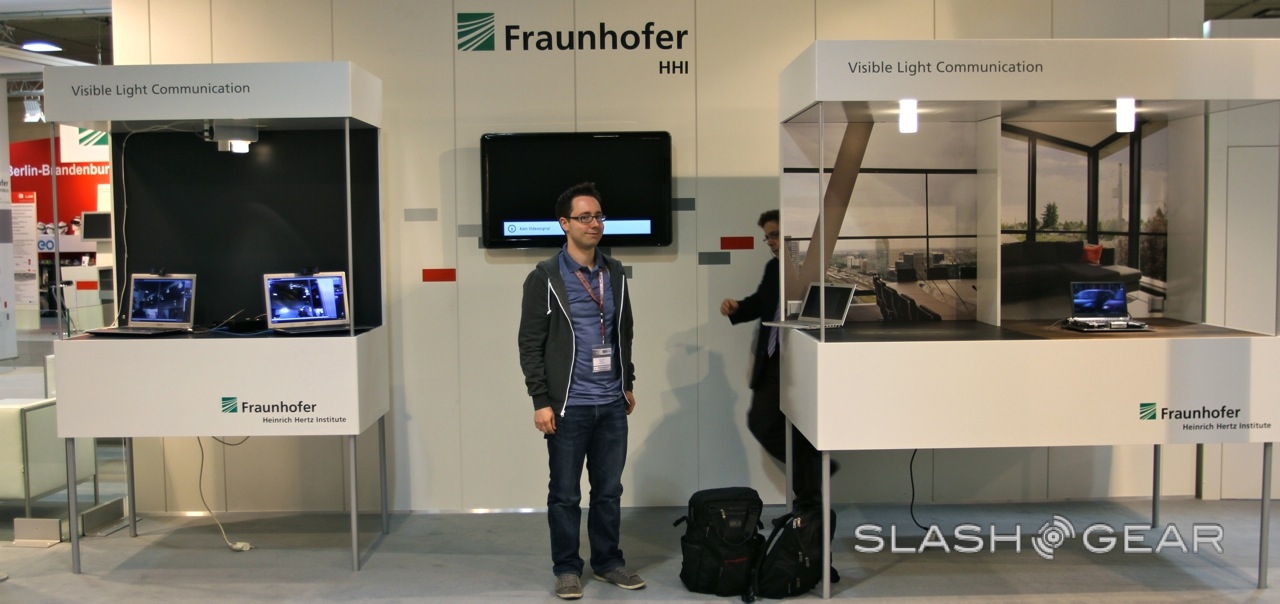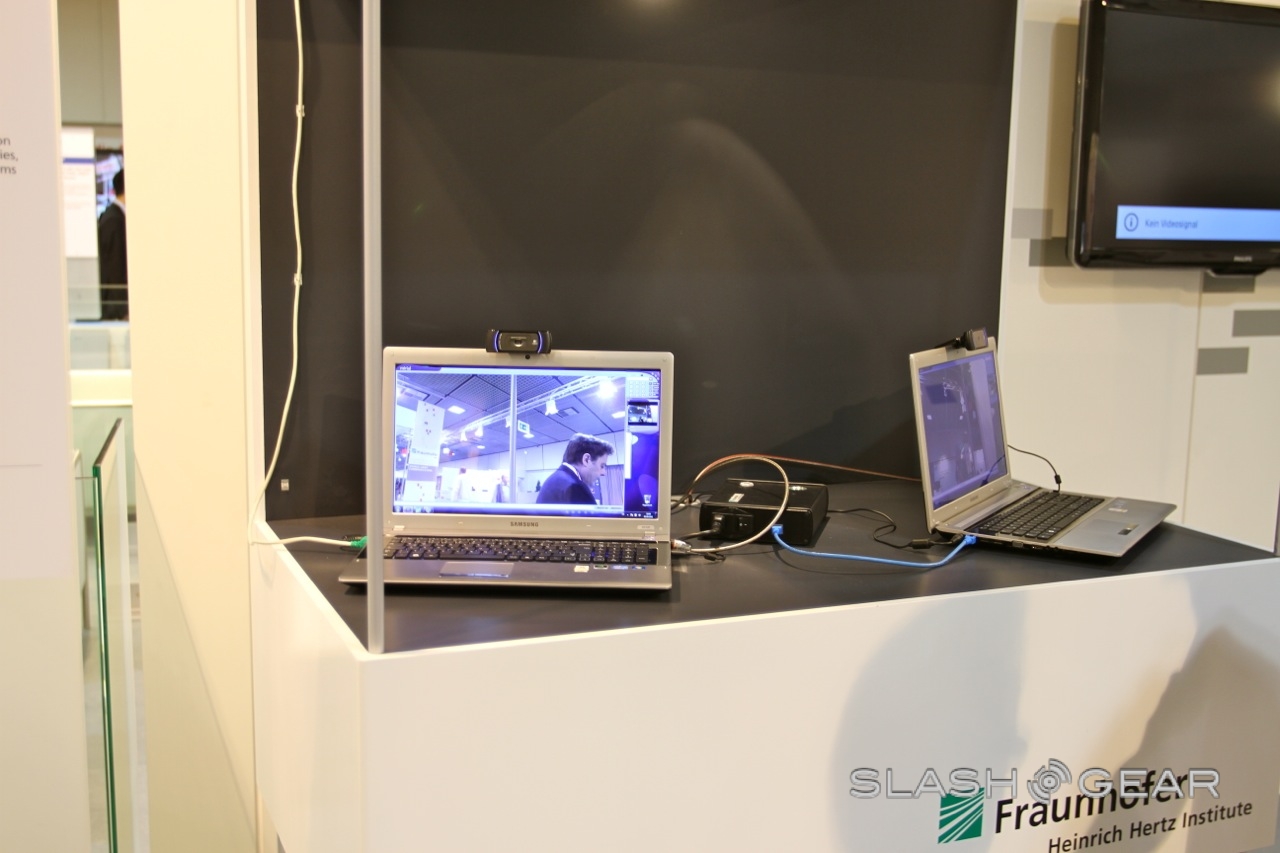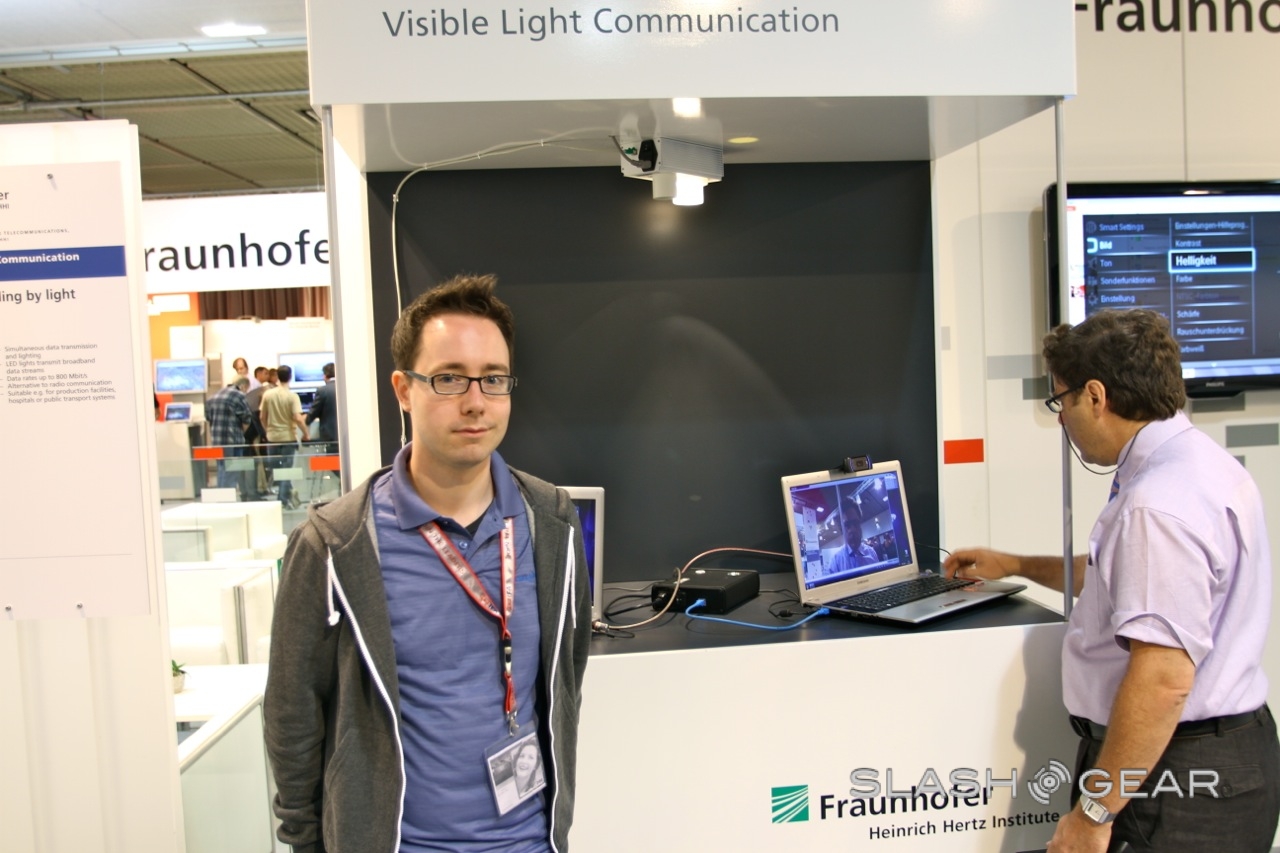Fraunhofer LED Networking Hands-On [Video]
The Fraunhofer Institute's LED-based light networking technology left us mighty impressed on paper back in August, so we jumped at the chance to test the Visible Light Communication system here at IFA 2011. Promising up to 800 Mbit/s data rates from rapidly flickering white LEDs, without any risk to hospital equipment, airline hardware or sensitive manufacturing tech, Fraunhofer's demo ran at a more mundane 10 Mbit/s but was still enough to stream high-res video streams between two notebooks. Check out the full video and more details after the cut.
In the video conferencing demo, one laptop was hooked up to a custom light fitting via ethernet cable, and another was connected to a receiver box. The light used LED to transfer data to the receiver, and then the receiver beamed back its own data using infrared for bi-directional communication. Put your hand in-between the sensors and the conversation froze; remove it and it automatically resumed.
Fraunhofer bi-directional visible light communication demo:
[vms dd0c4e8bdbcc82c6ba23]
Fraunhofer's second system demonstrated mono-directional communication, a laptop that could receive a streaming video from customized light fitting installations. As the motorized demo platform shifted from under one light to another, the connection dropped and then automatically re-established. Although in that situation you don't have two-way comms, it does make for a situation where one emitter can talk to as many devices as can fit within light range.
Fraunhofer mono-directional demo:
[vms 94208236a2e829ea6d88]
It's also potentially more secure. While it's tricky to limit the range of RF wireless systems like WiFi, or at least in a directional sense, with light it's a simple matter of blocking off where the communications signal shines and where it doesn't. Right now Fraunhofer's mono-directional prototype is a roughly mouse-sized box and USB bus powered (the bi-directional unit is roughly shoebox-sized) but the goal is something more akin to a USB memory stick. The research institute has no plans to commercialize the technology itself, but tells SlashGear that there are several prototype reference designs in the wild with potentially interested manufacturers.











